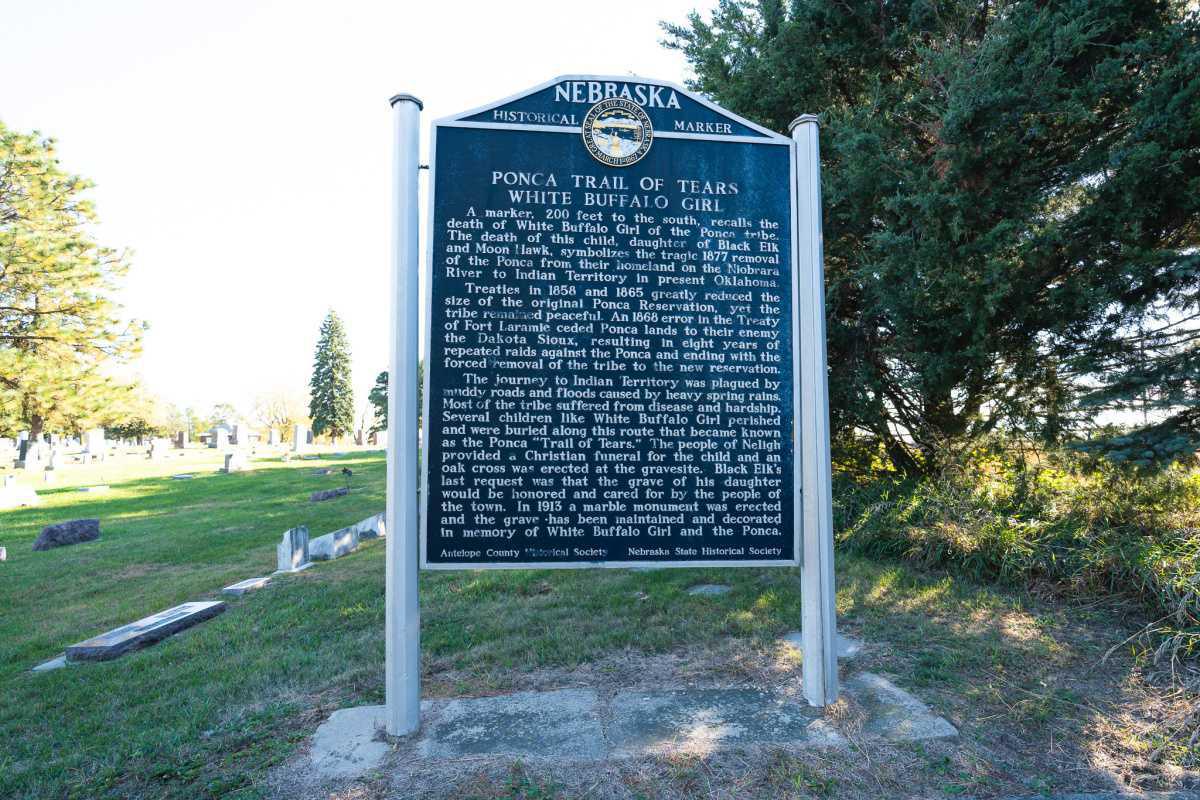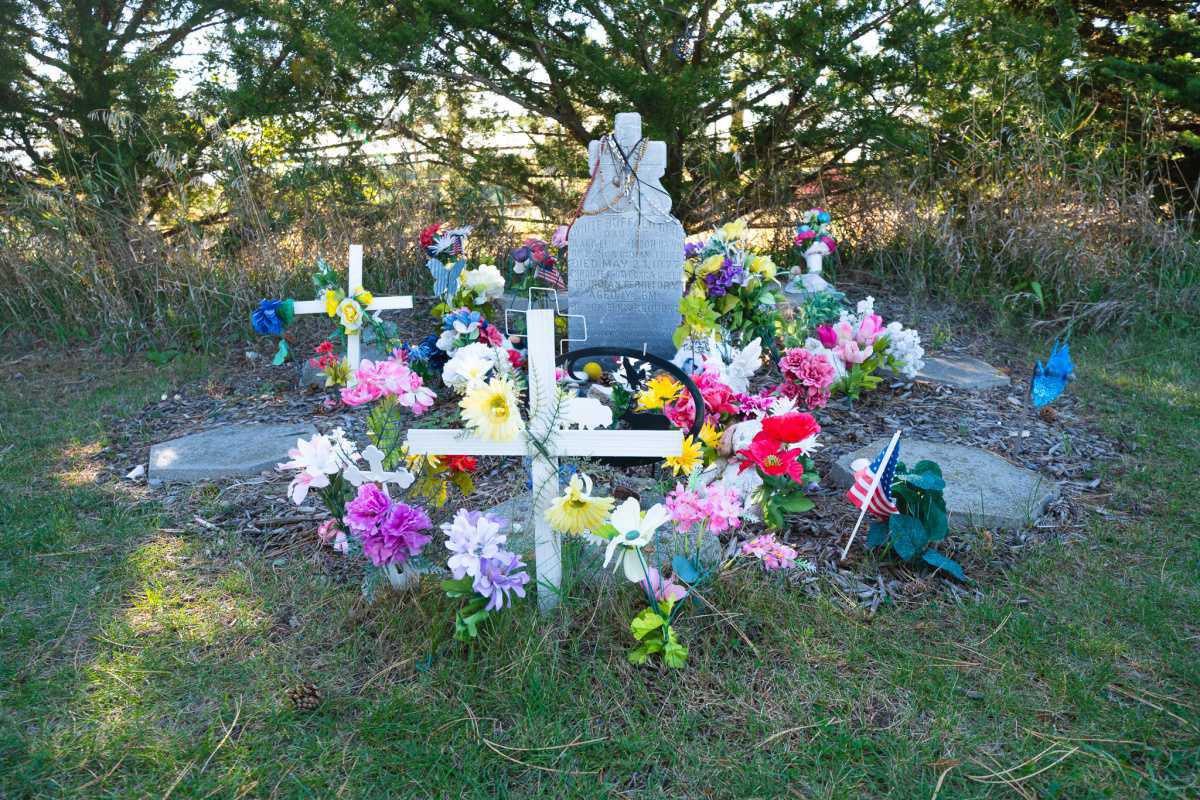
White Buffalo Girl Gravesite
10680 km
84937 Cemetery Rd
A stone in the Laurel Hill Cemetery at Neligh, Nebraska, reads: "White Buffalo Girl, Daughter of Black Elk and Moon Hawk of Ponca Tribe, Died May 23, 1877, in route from Ponca Creek to Indian Territory. Aged one year six months." Black Elk's request:
"I want the whites to respect the grave of my child just as they do the graves of their own dead. The Indians don't like to leave the graves of their ancestors, but we had to move and hope it will be for the best. I leave the grave in your care. I may never see it again. Care for it for me."
The removal of the Ponca Tribe from its ancestral homeland in northern Nebraska remains part of one of the darkest chapters in the history of Euro-American treatment of the native populations. Never a large tribe, the Ponca had been friendly to white people. By 1858, however, the pressures of settlement resulted in a treaty by which the Ponca had to relinquish most of their lands. Still, the Ponca remained friendly, and in 1865, a second treaty returned their ancestral burying grounds at the mouth of the Niobrara River to them. Following the Treaty of Fort Laramie in 1866, due to the inadvertent inclusion of Ponca reservation lands in the Sioux assignment, the Ponca became prey to raids by Sioux from the north.
In 1876 many of the tribes that had fought against the U.S. Army were removed from their assigned lands and sent to the Indian Territory. An order was also issued to remove the Ponca, "with their consent." After Chief Standing Bear had seen the proposed new home, the Ponca refused to leave Nebraska. They were forcibly removed and sent south in 1877. Their journey is known as the Ponca "Trail of Tears". White Buffalo Girl's death was an early part of this tragedy.
It is not known whether Black Elk or Moon Hawk ever returned to Nebraska. White Buffalo Girl's grave, however, has been cared for by the area white population. In 1960, upon recognition that the girl's monument was in disrepair, the marker was reset on a new foundation by a Tilden monument company. The grave remains today as a reminder of this tragic journey.


